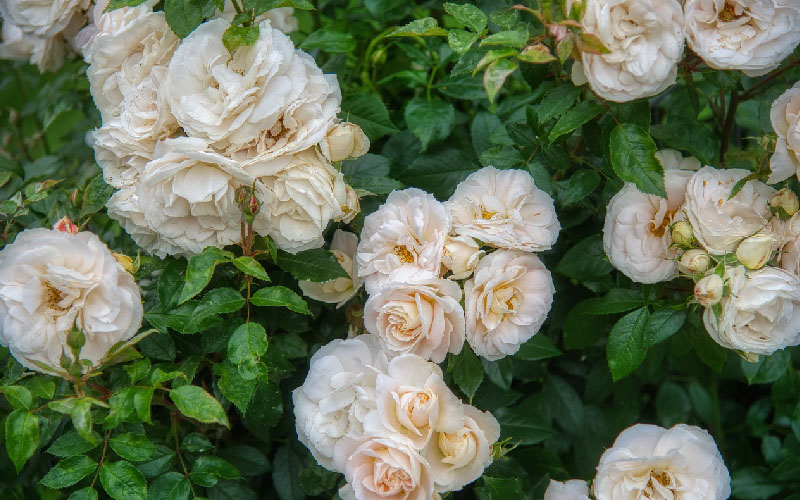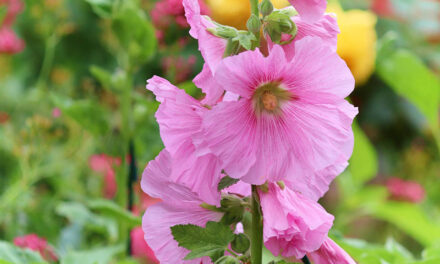Ground cover rose plants are a stunning addition to any garden, but their charm goes beyond aesthetics. These hardy plants not only create picturesque floral carpets but also serve a practical purpose in garden design. In this guide, we’ll delve into what defines ground cover rose plants and provide insights into their care, landscaping, and variety selection. Let’s get started.
What Defines Ground Cover Rose Plants?
Ground cover rose plants are a special category of roses renowned for their low-growing, spreading habit. They’re characterized by their sprawling, dense growth that can quickly carpet an area with vibrant blooms. These roses are often prized for their continuous flowering, disease resistance, and adaptability to various soil conditions.
What Is the Best Place to Plant Ground Cover Rose Plants?
To ensure the optimal growth and vibrancy of your ground cover rose plants, consider the following tips for the best planting locations:
1. Sunlight: Ground cover roses thrive when they bask in sunlight. Plant them in spots where they can enjoy at least six hours of sun a day. This will encourage abundant blooms and healthy, disease-resistant foliage.
2. Soil Quality: Like their taller rose counterparts, ground cover roses appreciate well-draining soil. Ensure your garden soil is enriched with organic matter to give these roses the ideal growing conditions.
3. Spacing: These roses need adequate space to spread and create a lush carpet of blooms. Plant them approximately 2 to 3 feet apart, taking into consideration their mature spread.
4. Location Variety: Ground cover rose plants can elevate your garden in multiple ways. Use them to adorn slopes, line garden borders, beautify pathways, or cascade over retaining walls. The versatility of these roses knows no bounds.
Maintenance and Pruning
To ensure the health and longevity of your ground cover rose plants, regular maintenance is crucial. Pruning is a key component of this care regimen. Each spring, prune your plants to remove dead or weak canes, and cut back the remaining canes to encourage new growth and more blooms.
Pest and Disease Management
Like all plants, ground cover rose plants can be susceptible to pests and diseases. Common issues include aphids, Japanese beetles, and black spot fungus. Implement integrated pest management strategies to deter these nuisances and consider disease-resistant varieties for peace of mind.
Seasonal Care
As the seasons change, so should your approach to caring for ground cover roses. During winter, provide mulch or other protective cover to shield the roots from frost. In spring, focus on pruning and fertilizing to stimulate new growth. In summer, keep an eye on watering to prevent drought stress, and in autumn, prepare your roses for the colder months.
Companion Planting
Companion planting is a clever strategy to maximize your garden’s beauty and functionality. Consider planting ground cover roses alongside companion plants like lavender, catmint, or ornamental grasses. These combinations not only create visual interest but also attract pollinators and beneficial insects.
Landscaping Ideas
Integrating ground cover rose plants into your garden’s design is an art form. Use them as edging along pathways, to fill in gaps between taller plants, or to cascade gracefully over walls and embankments. Their versatility and low profile make them perfect for harmonious landscaping.
What Are the Best Ground Cover Rose Plants?
When choosing ground cover rose varieties, consider factors such as flower color, size, and growth habits. Some popular options include the “Drift” series for compact and disease-resistant choices, or “Flower Carpet” roses for brilliant color options. Explore a wide range of varieties to find the perfect fit for your garden.
When it comes to choosing the best ground cover rose plants, a few varieties stand out:
1. Flower Carpet Roses: These hardy, disease-resistant roses are famous for their continuous blooming. They are available in various colors and make an excellent choice for novice and experienced gardeners alike.
2. Drift Roses: With a more compact growth habit, drift roses are perfect for small spaces or containers. Their profusion of flowers provides an impressive display.
3. The Fairy Rose: Admired for its classic rose appearance, The Fairy Rose offers a timeless touch. Its small, soft pink blooms create a charming and delicate blanket.
4. Magic Carpet Rose: This variety showcases flowers that shift in color as they bloom, adding a touch of mystique to your garden. Their vibrant hues are a sight to behold.
5. Red Ribbons Rose: Renowned for its fiery red blooms, the Red Ribbons Rose makes a bold statement in any garden. Their bright color is captivating and adds a dash of drama to your landscape.
Frequently Asked Questions
- How often should I water ground cover roses?
Ground cover roses prefer consistent moisture. Water deeply when the soil is dry to the touch, especially during hot and dry spells. - Can I plant ground cover roses in containers or pots?
Yes, you can grow ground cover roses in containers, provided they have adequate drainage. Use a good-quality potting mix and choose a suitable container. - Are ground cover roses suitable for slopes and hillsides?
Absolutely! Their spreading nature makes them an excellent choice for erosion control on slopes and hillsides.
🌼 Conclusion
Ground cover rose plants offer a blend of elegance and practicality in your garden. Their low-maintenance nature and captivating beauty make them a top choice for garden enthusiasts. By understanding their characteristics, seasonal care, and the art of landscaping, you can create a garden that’s not only eye-catching but also easy to manage. So, why wait? Start your ground cover rose gardening journey today!










